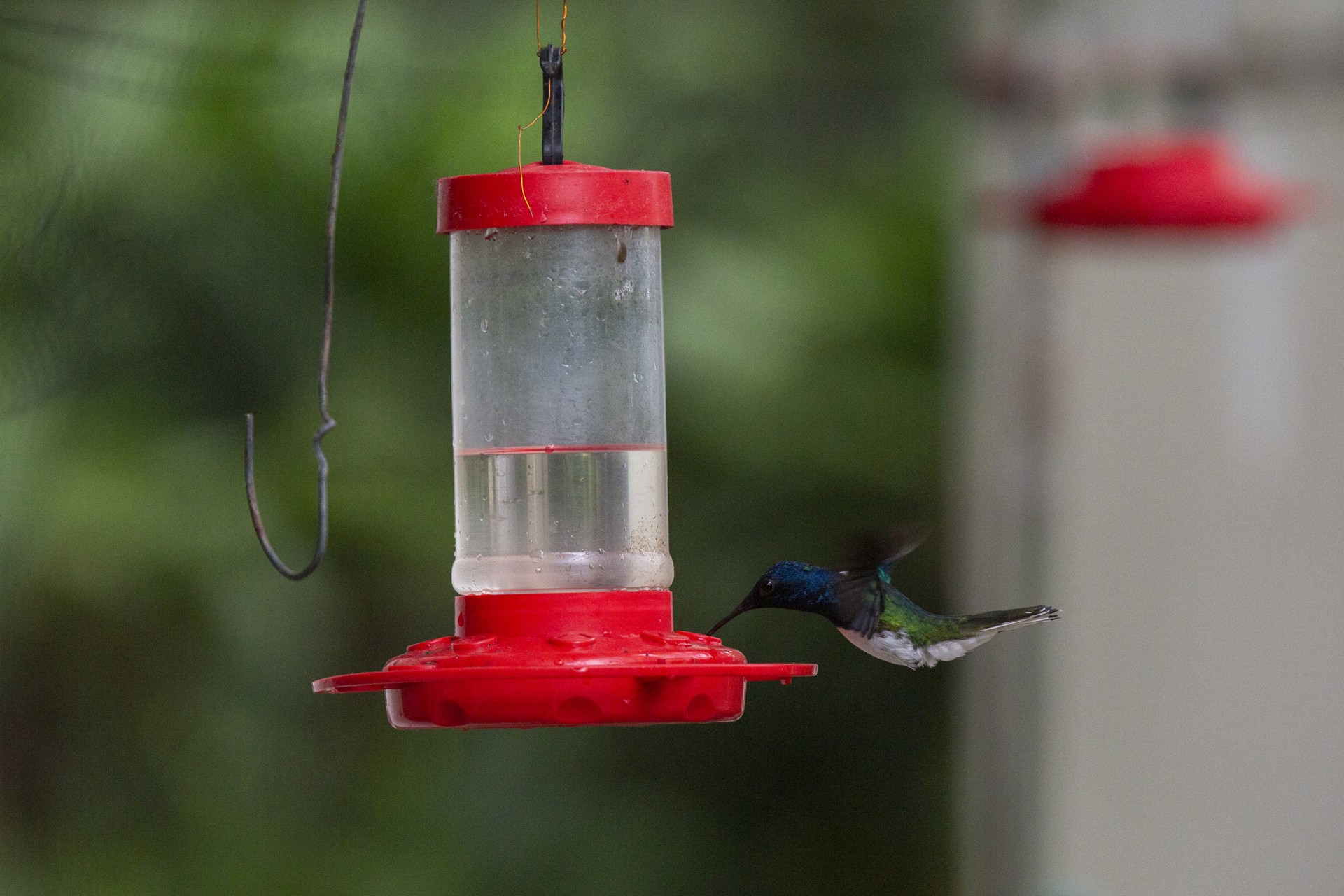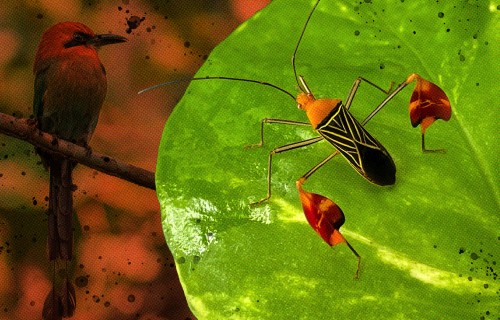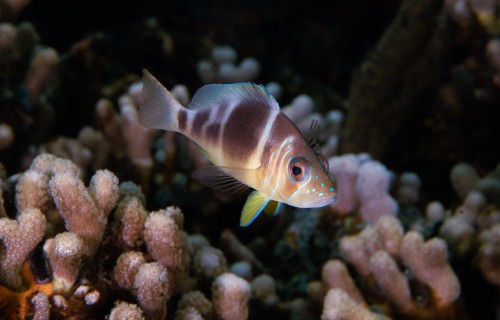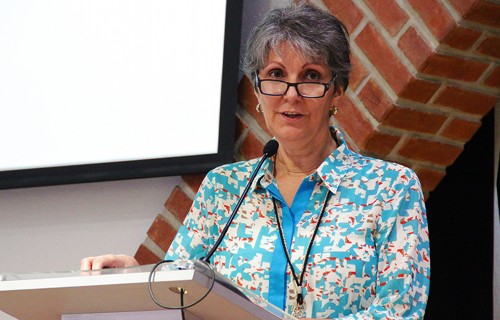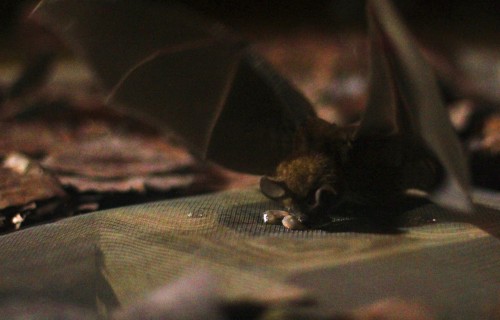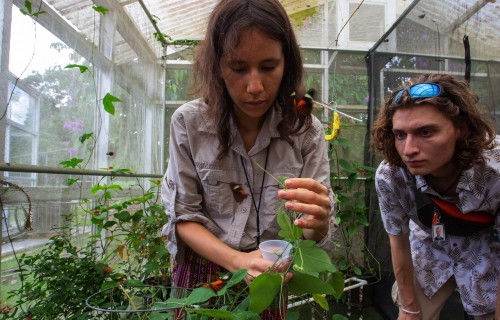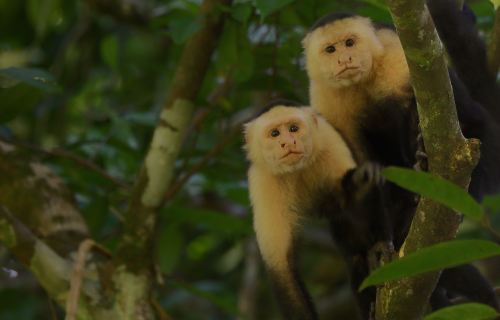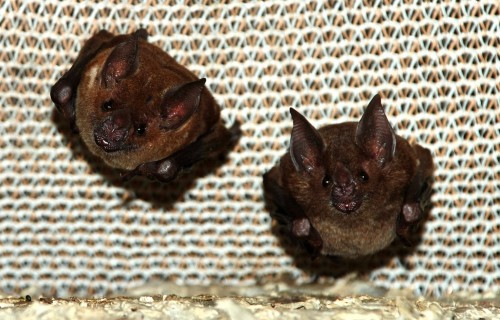Indigenous marine biologist deciphers the evolution of feeding strategies of sister fish species on both sides of the isthmus of Panama
Deceiving
plumage
Female Hummingbirds look like
males to avoid harassment
Text by Leila Nilipour
Cover photo by: Steve Paton
Colorful female Jacobins in the wild may feed more frequently and for longer periods than their drab counterparts
One of the most distinctive features of many birds is their colorful plumage, an attribute that scientists have frequently associated with sexual selection because it is often observed in reproductive adults: the flashier their feathers, the more likely the birds are to find a potential mate. However, after looking at over 400 hummingbirds in Panama, Jay Falk, a former pre-doctoral fellow at the Smithsonian Tropical Research Institute (STRI) and the Cornell Lab of Ornithology, suggested another possible explanation.
“In the case of hummingbirds, specifically the white-necked Jacobin that I study, males are colorful and most females are comparatively dull,” Falk said. “But if you look closely, it turns out that about one-third of female Jacobins look like males.”
Evolutionary biologist Jay Falk wondered what benefit female white-necked Jacobins got from having the same beautiful colors as males. Credit: Jorge Alemán, STRI.
Oddly enough, all juvenile females exhibit this flashy plumage. Yet, as they become sexually mature, most of them lose it. So, if mating is not a priority for these young females, why would all of them exhibit the colorful feathers? To understand this phenomenon, Falk visited STRI facilities in the town of Gamboa, Panama, for five consecutive years to study these birds as part of the field work for his doctoral degree.
Through various experiments, he discovered that male Jacobins are quite territorial, and they can be professional harassers when it comes to protecting their food sources. And female Jacobins usually take the brunt of it.
His findings, published in Current Biology, resulted from watching male Jacobins’ interactions with taxidermy mounts and from observing the birds feed in the wild. In general, the mounts exhibiting female plumage received more aggressive and sexual attention than the mounts displaying male plumage. Meanwhile, colorful female Jacobins in the wild accessed feeders more frequently and for longer periods than their drab counterparts.
During his experiment, Jay found out that colorful female Jacobins had lower chances of being chased away by other hummingbirds when they accessed feeders than their drab counterparts. Credit: Jorge Alemán, STRI.
“Through this experiment we discovered that female hummingbirds, by simply looking like males, had a better chance of feeding without being attacked or chased away by other hummingbirds,” Falk said. “These results demonstrate how non-sexual social selection plays an important role in the evolution of female ornamentation.”
“Male-like female ornamentation has been observed before in a few hummingbirds and other avian species, but its function has been poorly understood,” said Dustin Rubenstein, professor of ecology, evolution and environmental biology at Columbia University and senior author of the study. “We were quite surprised to learn that in white-necked Jacobins, females that look like males are harassed less when feeding not just by other Jacobins, but by other species of hummingbirds as well.”
Reference:
Falk, J.J., Webster, M.S., Rubenstein, D.R. (2021). Male-like ornamentation in female hummingbirds results from social harassment rather than sexual selection. Current Biology. https://doi.org/10.1016/j.cub.2021.07.043


